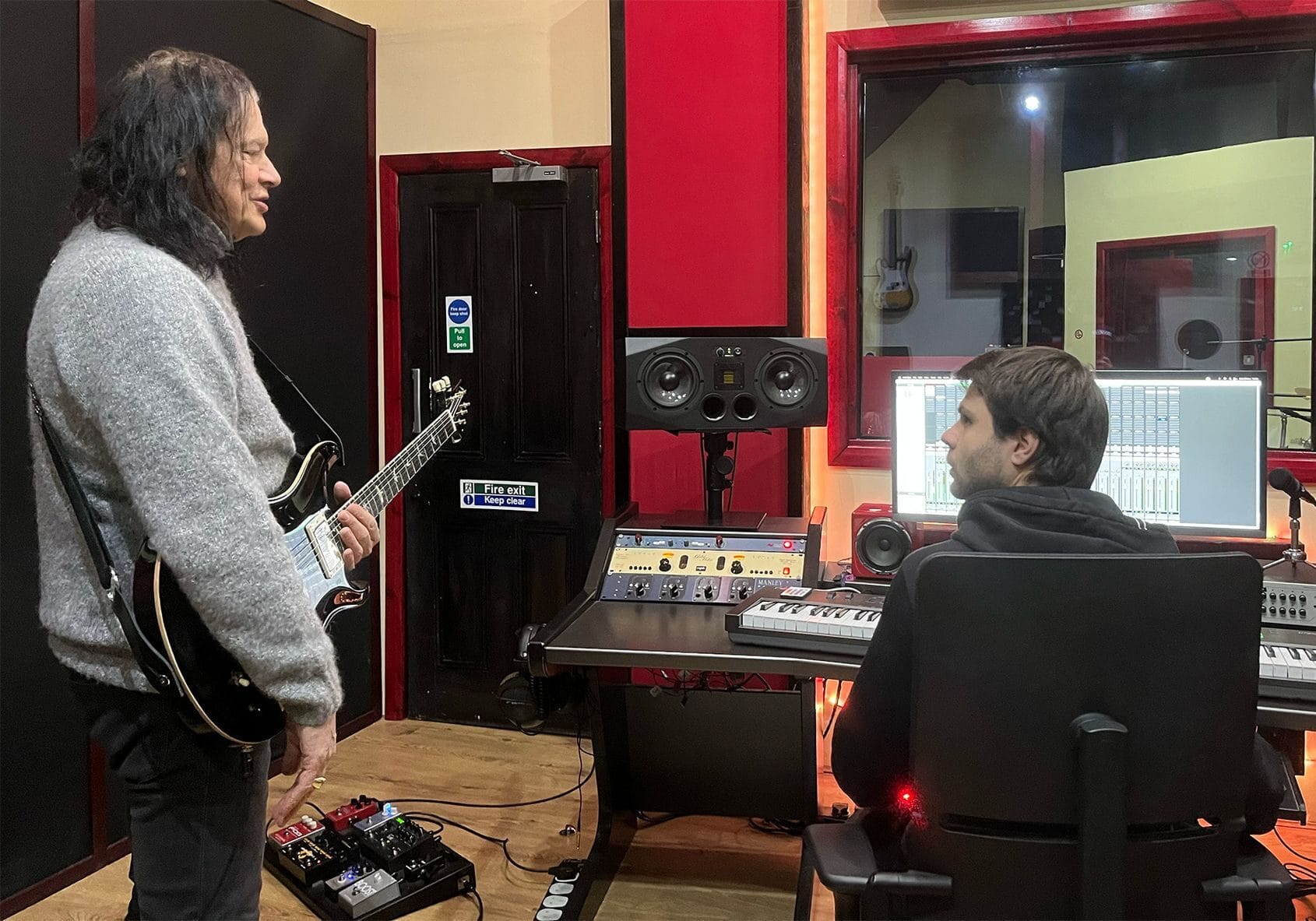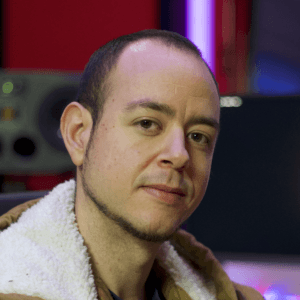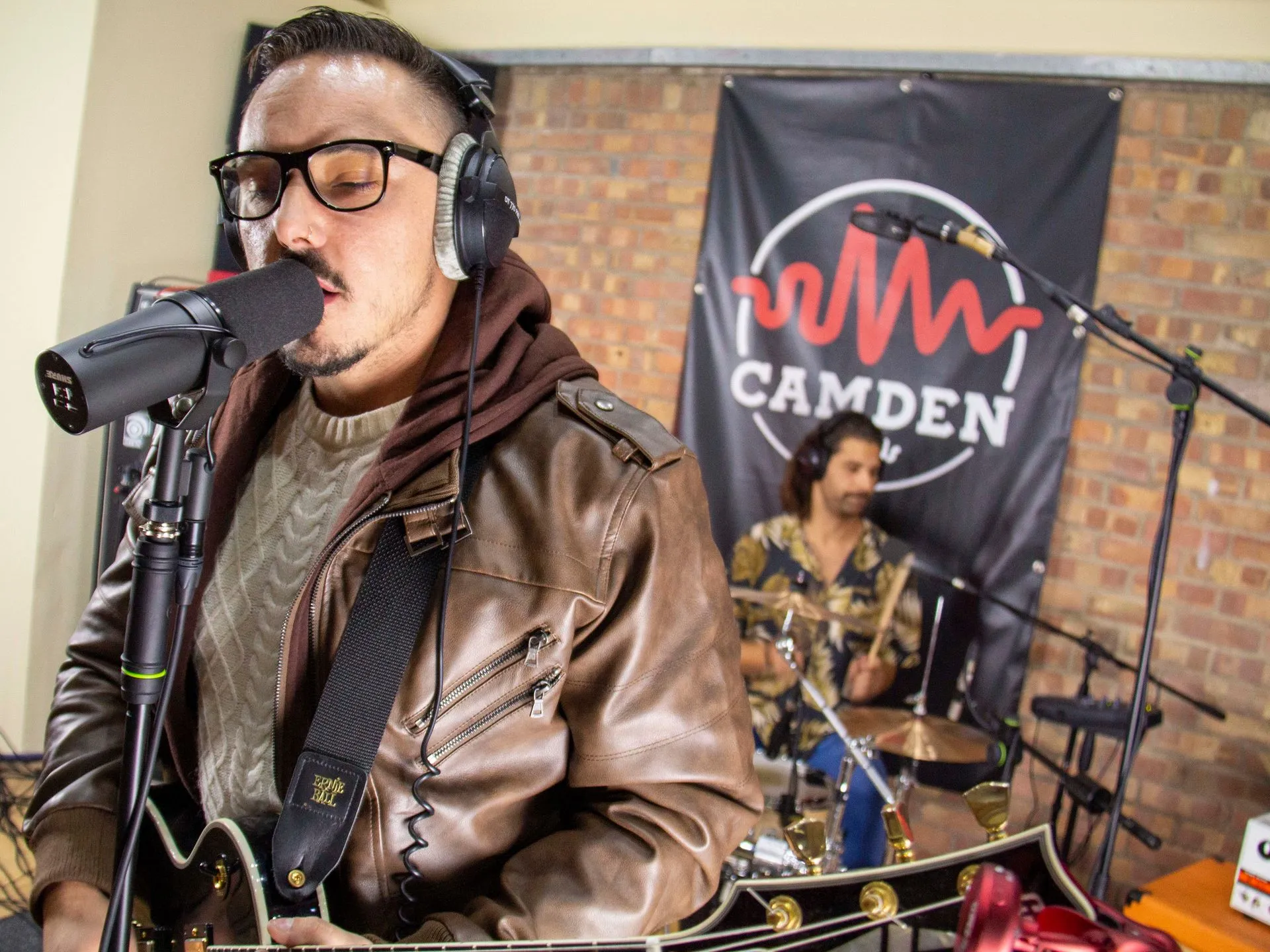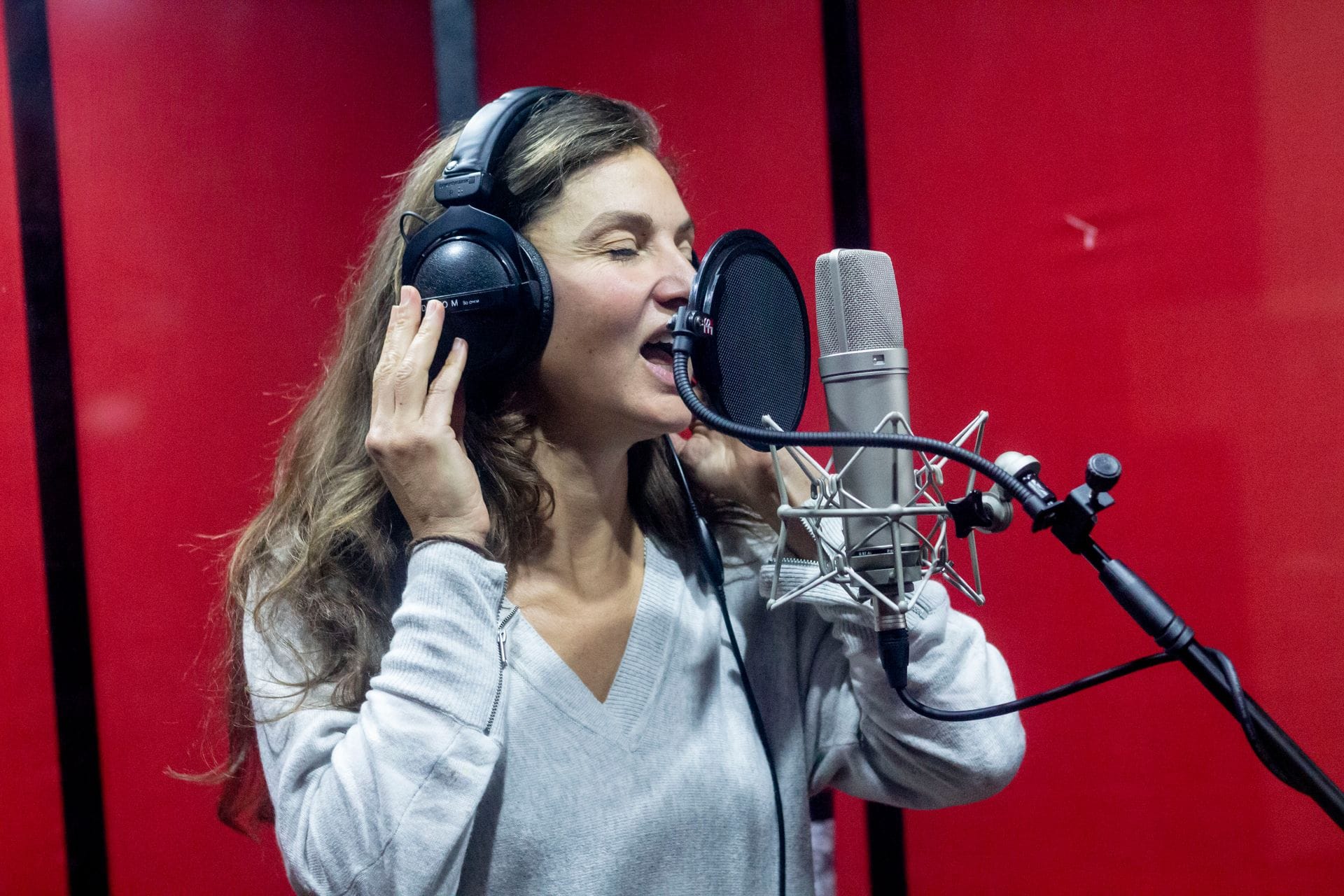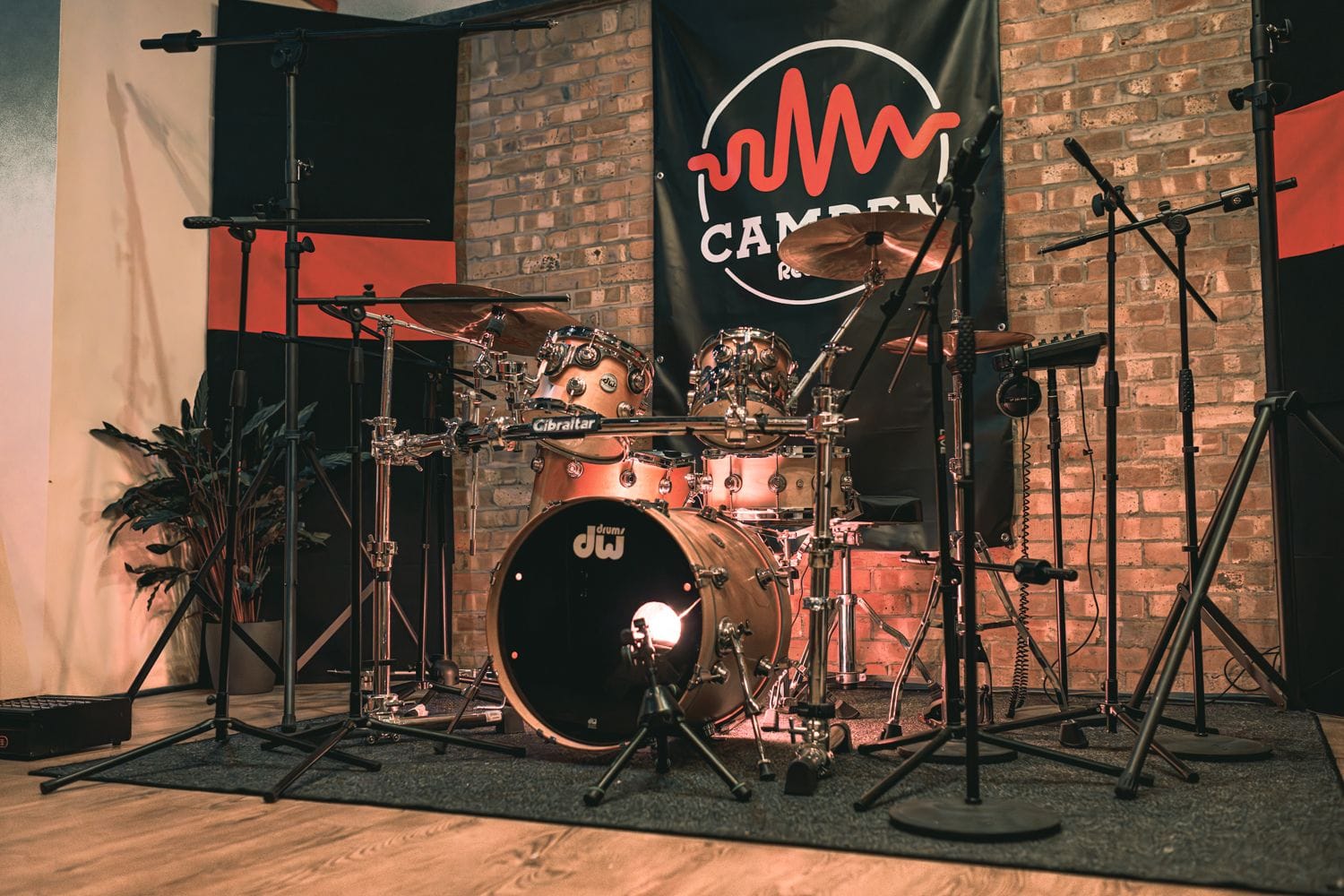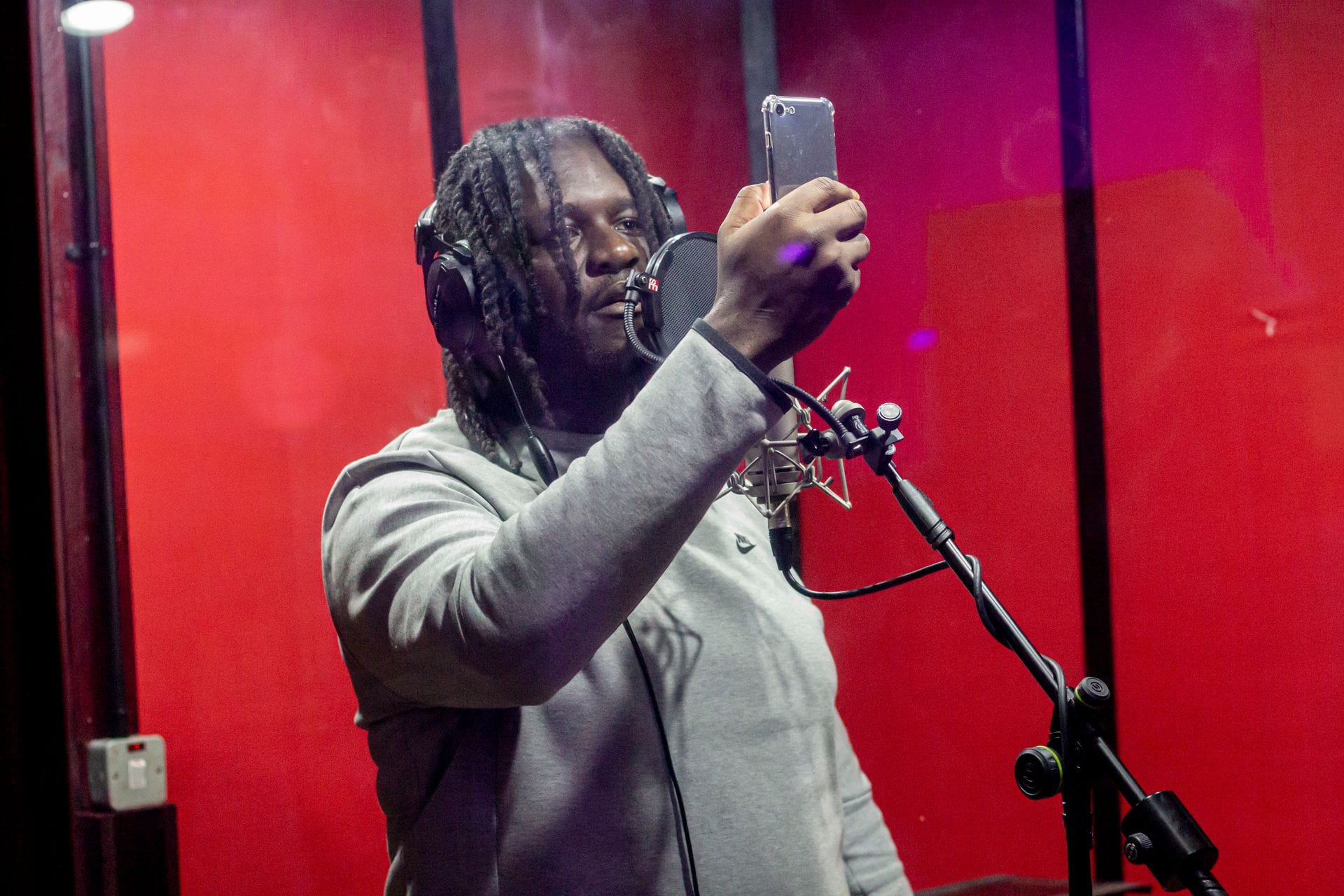Discussions to have with your engineer.
1. Dealing with the Low End
In 2020 one of the most important aspects of a song is its low end. Many musicians just say ”Make it big” without thinking beforehand how this can be achieved. It is not just boosting the low band of the EQ or compressing it a lot, even though certain type of compression can reduce the low frequencies. The trick is layering sounds the right way. In a band context usually the kick and the bass will be the only instruments in this frequency range and you have to find a way to blend them in a pleasant sounding way. For example even though when played together they give the fullness you hear on the big records, only one of them can dominate the low frequencies – a good way to think about this is to imagine a puzzle – one element fits where the other is missing.
1.1. How to pick the right Kick Drum Sound
Generally there are two different distinct kick sounds – even though sometimes there is a cross between them. The first one is the warm, fat and rich in the low end with less highs. This one is usually recorded with a microphone outside of the drum itself. It is suitable when the drums are adding to the texture of the song and the bass is carrying the groove. In this situation you feel the kick more than you hear it. In my experience this type of kick works best for slower songs, because you can have the full note length of the bass drum fade out without creating unwanted mud – this is because low frequencies have greater length therefore longer sustain. The other type of Kick Drum Sound is the clicky and strong in the mid and high frequencies with less boomines. It is primarily used when the drums play a groove and figures that need to be noticed because it will even cut through a dense mix. It is recorded with a microphone inside the drum itself. Later will be processed with a slow attack compression to emphasise on the transient. It works well with songs with a fast bpm, and passages with many hits. The lack of massive low end prevents from muddying the mix. Many modern jazz records use this type of timbre even though it is mostly noticed in the metal genres.
1.2. Creating a fitting Bass Sound
With the Bass Guitar or Synth you have to pick the opposite of your Kick. The difference here is that you have a lot more in the middle options with adding different effects like distortions and fuzzes and blending amp and DI recordings. So for example if you have a warm and fat kick you want to have a bass that is rich with the middle and high frequencies probably with some light distortion to help it cut trough the mix. A rule of thumb is that more distortion you add to something, the less attack and articulation you have. Usually with the bass guitar in a studio session you will record one DI track and one Amped. The DI is great for retaining a clean low end or for reamping later. The amplified is awesome for adding character and distortion if the head you use is a good one. My advice is that if you can’t use a decent Bass Amplifier better don’t record one, but rather ask your engineer to reamp the DI track through an amp simulator in their DAW – you will certainly achieve better results. Very crucial step is to align the bass and kick hits to be at the exact same time – most of the time the editing is included in the mixing service but it is a good thing to mention it to your engineer beforehand to ensure it.
2. Gating
The gating effect is a very simple one yet very effective – a threshold is set and everything below it is attenuated. It is great for removing low background noise, reducing microphone bleed and tightening up sounds. Even though it can be used on all kinds of source material it’s most commonly added on the drums. A good topic to cover with your engineer when discussing the sound of the mix is the timbre of the drums. To help with you I will now explain what the American and the British way of mixing are. The British uses less gating and allows the layering of the sounds thus creating a big texture and a wall of sound – especially for drums this makes them sound bigger. The American utilises heavy gating, reducing the bleed as little as possible even sometimes changing some drums with samples for a cleaner tone. This is great when you want a tight sounding drum kit. It works very well when the drums are carrying the groove and need to be very pronounced.
3. Reverb
Reverb is one of the greatest effects – it can be both real/natural produced by echo chambers – built to have a specific acoustics, or artificial – plates, springs or digital units. They all have unique sound characteristics and none are bad – just different flavours. The Plates for example are usually bright, whilst the Spring ones darker. When recording is usually best to record with no reverb at all, so your engineer can add it later in the mixing process for more precise control. It is not impossible to reduce the already recorded reverb, but the result will never be the same as a dry recording and some mud may still be audible. When 2 discussing the amount of reverb you want on your song it is good to think why you want it. For example if you want something to stand out in the front and have attack and strong definition it is better to use less reverb, or even no reverb at all but rather a combination of delays – slapback + ping pong work really well for adding depth without sounding too mushy or pulling the source back in the mix. Maybe discuss this combination with your engineer – especially on songs with fast tempo, because long reverb tend to not work well with this type of music. On the other hand using more reverb can help something blend better and be part of the texture of the song. For example if you have distorted guitars but don’t want them to stand out too much but rather add to the layers of the song you can ask for more reverb on them – a good example for this are some of Deftones’ songs.
4. Demystifying some Mixing Terms
Following the end of the Loudness Wars many musicians went to the studio with the requests for their songs to sound natural, uncompressed and organic. But when you think about that what do these words actually mean. First I will explain what compression is. There are two compression types – downwards – which attenuates sounds above a certain threshold and upwards which amplifies the ones under the threshold. The first one is the most popular. There are different analogue compressors with different circuits, the most famous of them being the VCA, FET and Optical. I won’t delve into how they differ from each other – leave this to your engineer. The reason why we use compression is to reduce the dynamic range and thus have the details pop up more in the mix. When discussing the amount of compression that you want it is a good practice to analyze your arrangement first. For example you cant have overly dynamic elements, especially the loudest ones like Vocals if you have fairly steady in terms of loudness track, because they are gonna get buried down in their quieter parts. If you want dynamic track maybe rearange if needed and play certain parts of the song quieter than the others. Also very important aspect to discuss with the mixing engineer is the automation of the Mix Bus volume. A good practice is to make the verses quieter with one or two dbs so that the choruses feel bigger and have more impact. In my practice I have always been confused when people say ”I want my mix to sound natural and organic” because a big part of the modern studio mix is layering and using effects which always sound artificial. Again we are going to go back to arrangement and the way of recording the track. Maybe reduce the number of layers and instruments you have in your song, another good way is to record the whole band as a live session without overdubs. Using this method you may lose some of the shine and polished modern sound but you will definitely have more vibes into the recording.
